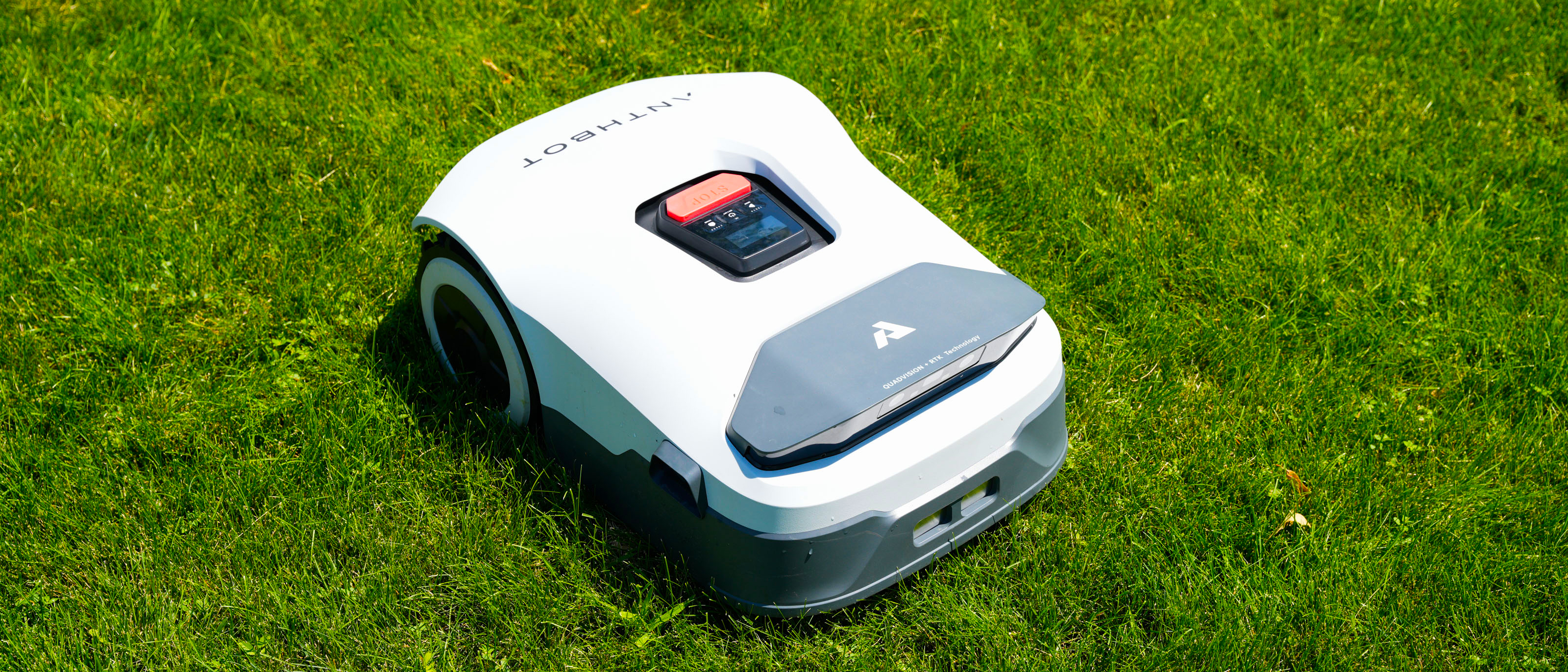Tom's Guide Verdict
Easy to set up and use, the Genie 3000 is best for keeping your lawn well-manicured through regular trims and an app-enabled mowing routine. Weedy or neglected lawns might not be a good match here, but it boasts an easy setup process and user-friendly app interface.
Pros
- +
No ground wires to contend with
- +
Set it and forget it mowing
- +
Quiet operation
Cons
- -
App could use some refining
- -
RTK unit is hard to place effectively in complicated yard layouts
Why you can trust Tom's Guide
Price: $1,599
Weight: 28.6 pounds
Dimensions: 24.8 x 16.1 x 10.6 inches
Waterproof rating: IPX6
Connectivity: 2.4G WiFi, 4G WiFi, Bluetooth
Cutting width: 7.9 inches
Cutting height: 1.18 to 2.76 inches
Max slope: 45% (24 deg)
Noise level: less than or equal to 58dB
Charging time: approximately 2 hours
Battery: 10Ah
Max mowing area: 0.89 acres
CPU: 8-Core
When the summer's here in Colorado, the hot and unpleasant weather makes me want to mow my lawn less and less frequently. Add into that the hefty carbon footprint of my gas mower, and my yard suffers more often than it should. So the Anthbot Genie 3000 has been a welcome addition to my yard.
This robot mower gets set up and mowing quickly, and the app makes it pretty easy to control it from the comfort of my living room. Its cutting radius is on the small side, but the battery life is very good, so it cuts well even if it takes a while to get the whole yard done.
It’s best for well-manicured lawns that aren’t too shaggy. Fortunately, the app makes it easy to set up a schedule and ensure conditions are just right for the Genie to operate.
Price and availability
The Genie 3000 is available for purchase now on Anthbot’s website. You can buy the Genie 3000 for $1,599 at Anthbot.com. You can finance the purchase through Paypal at checkout. The Genie ships free and comes with a 30-day return window, a 30-day price guarantee, and a 2-year warranty.
You can also purchase the Genie through other retailers like Walmart and Amazon, though availability appears to be limited.
Design
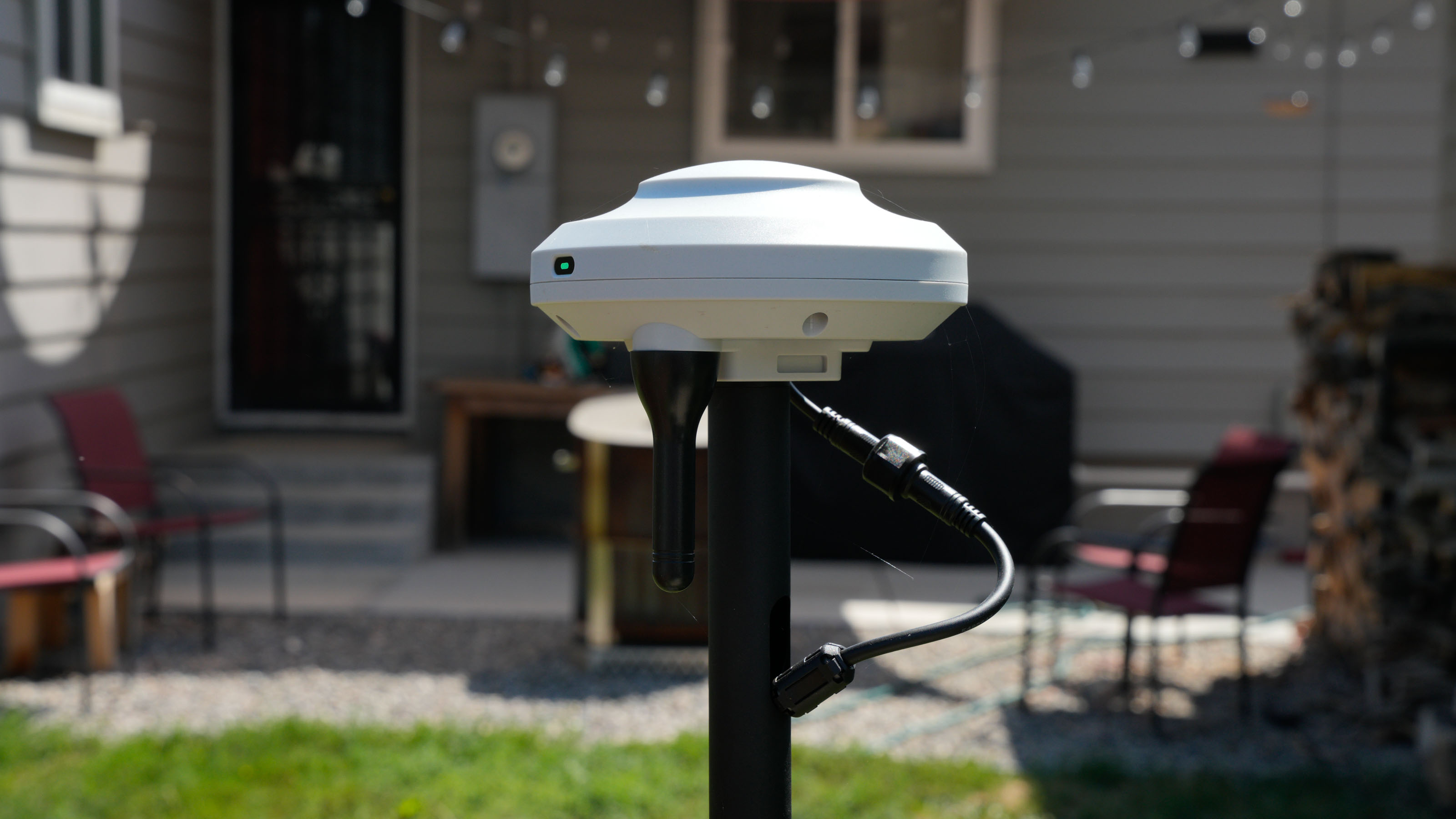
The Genie comes with the mower unit, the docking station, and the RTK Pole Station. These will need to be positioned in your yard on or near the grass, and close to each other. Anthbot says the RTK station easily penetrates clouds, and you’ll get a strong signal even under dense trees or other coverage. Anthbot’s website says the signal stability is 50% better than other RTKs that operate on just 8 bands.
If the signal does weaken, the Genie has four AI cameras that will help the unit continue to find its path unabated. These cameras also help with edge detection, and get used during the auto mapping process to ensure you get a solid map of your lawn for precise cutting.
Get instant access to breaking news, the hottest reviews, great deals and helpful tips.
The cameras feature 300-degree vision, which Anthbot calls “human-like,” or in other words, generally what you would see if you were the robot. It also features sensors that prevent collisions in a 360-degree radius from the unit. There are no perimeter wires to install, since the unit’s cameras and GPS capabilities allow it to map out the yard precisely.
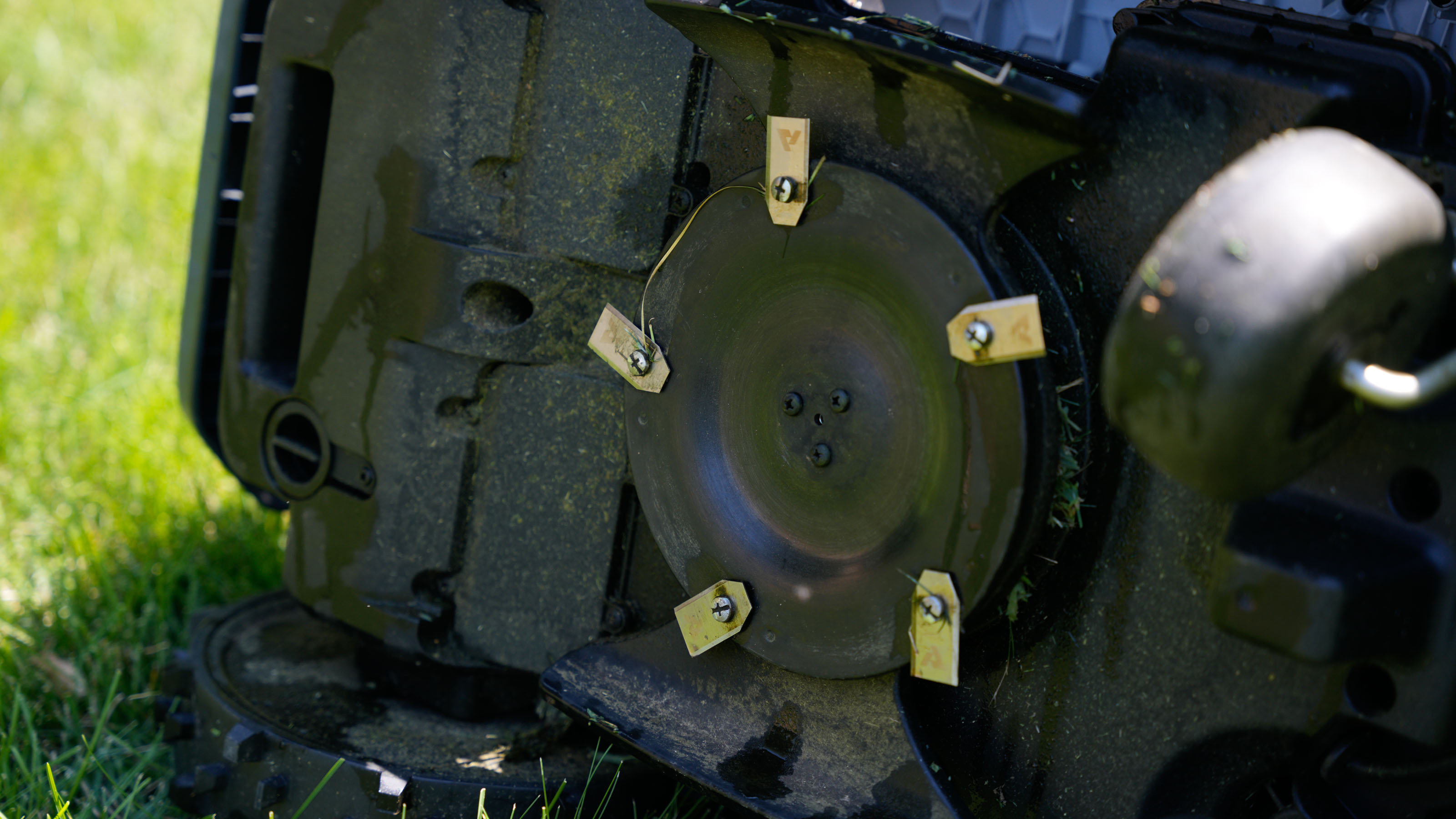
The Genie cuts using 5 ti-coated blades spinning at 3,000 rpm. It features an 8-inch-wide cutting path, and you can adjust the cutting height from 1.2 inches to 2.8 inches. Should you need to shut the unit down in a hurry, there’s an emergency stop button prominently positioned on top.
The Genie is IPX6 rated, which means it’s sealed to resist water penetration. You can clean it with a hose, and while it can operate in the rain, it will automatically return to its dock when it senses a rain shower. If you live in a rainy locale, you may want to consider the optional rain cover, ($200, sold separately).
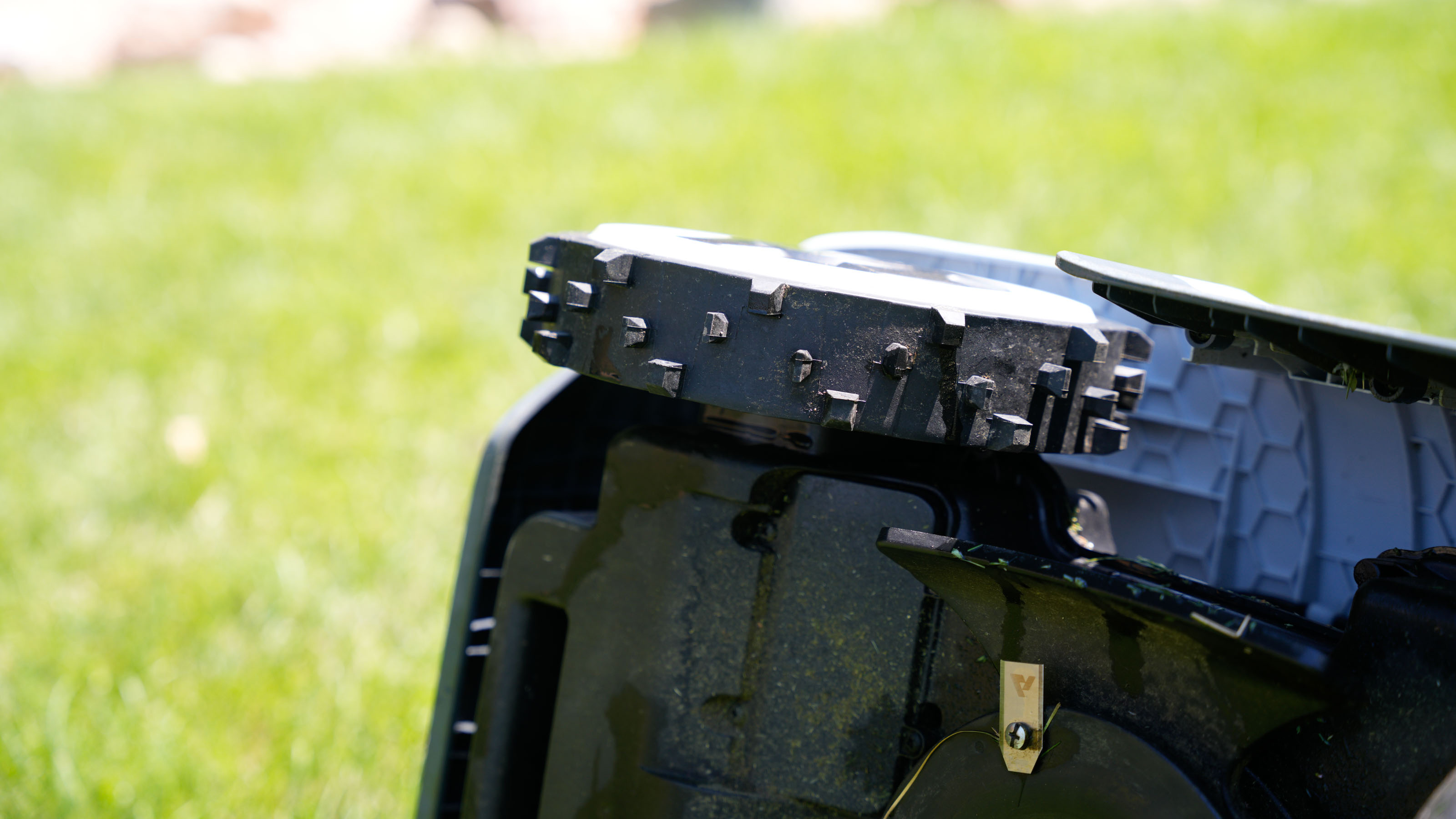
Before you use the Anthbot, you’ll need to map your yard. The Genie can do this automatically, or you can do it manually using the remote control mapping mode. The process should take between 10 and 20 minutes, according to Anthbot.
Using the Anthbot app, you can also set up multiple zones for your Genie. If you have a complicated yard layout, for example, you can program your Genie so it knows which zone it’s operating in. All told, the Genie 3000 can handle up to 30 different zones.
Anthbot says the Genie 3000 comes with a 10Ah battery but does not advertise a max run time. This would largely depend on the type of terrain on which the Genie will operate. The Genie can handle up to a 24-degree slope, for example. And if your yard has many such pitches, expect to get less run time out of the unit than if your yard is relatively flat. A full charge takes about two hours.
Setting up the Anthbot
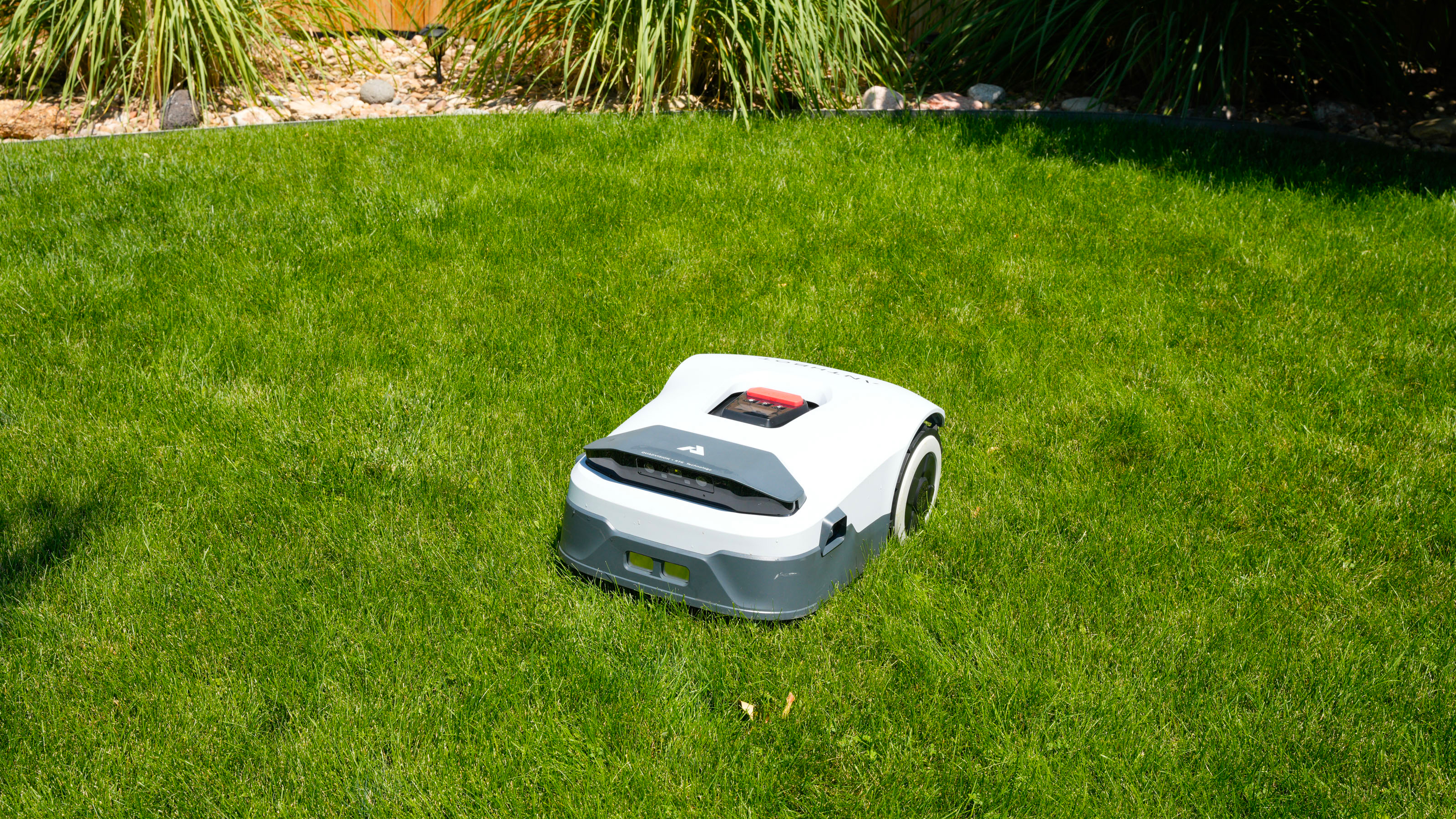
The charging station must be positioned on your lawn, or securely fastened on the edge of the lawn, so the unit can easily find the station and dock with the charging tines. The dock can be secured in place using the included stakes.
The RTK tower also needs to be positioned near the charging station. This pole uses a three-tine stake that plunges into your lawn. If there’s no ideal place for you to position the RTK, Anthbot does sell extension cables and wall mount brackets (sold separately) to help you find the best position possible.
The RTK’s effective range is about 300m in radius. It needs to be installed about ten feet from any obstacles. There are indicator lights on the unit to let you know if the RTK unit is positioned properly or if it needs to be moved.
I actually found it difficult to find a suitable spot in my yard, since I have a detached garage, several trees, and other obstacles to contend with. My test unit did not come with a wall mount, but in the long term, that’s probably what I’ll need to make this work. For now, I found a spot that’s pretty inconvenient and had to hang the power cable up so the mower could run underneath it. It’s no long-term solution, but it’ll do for testing.
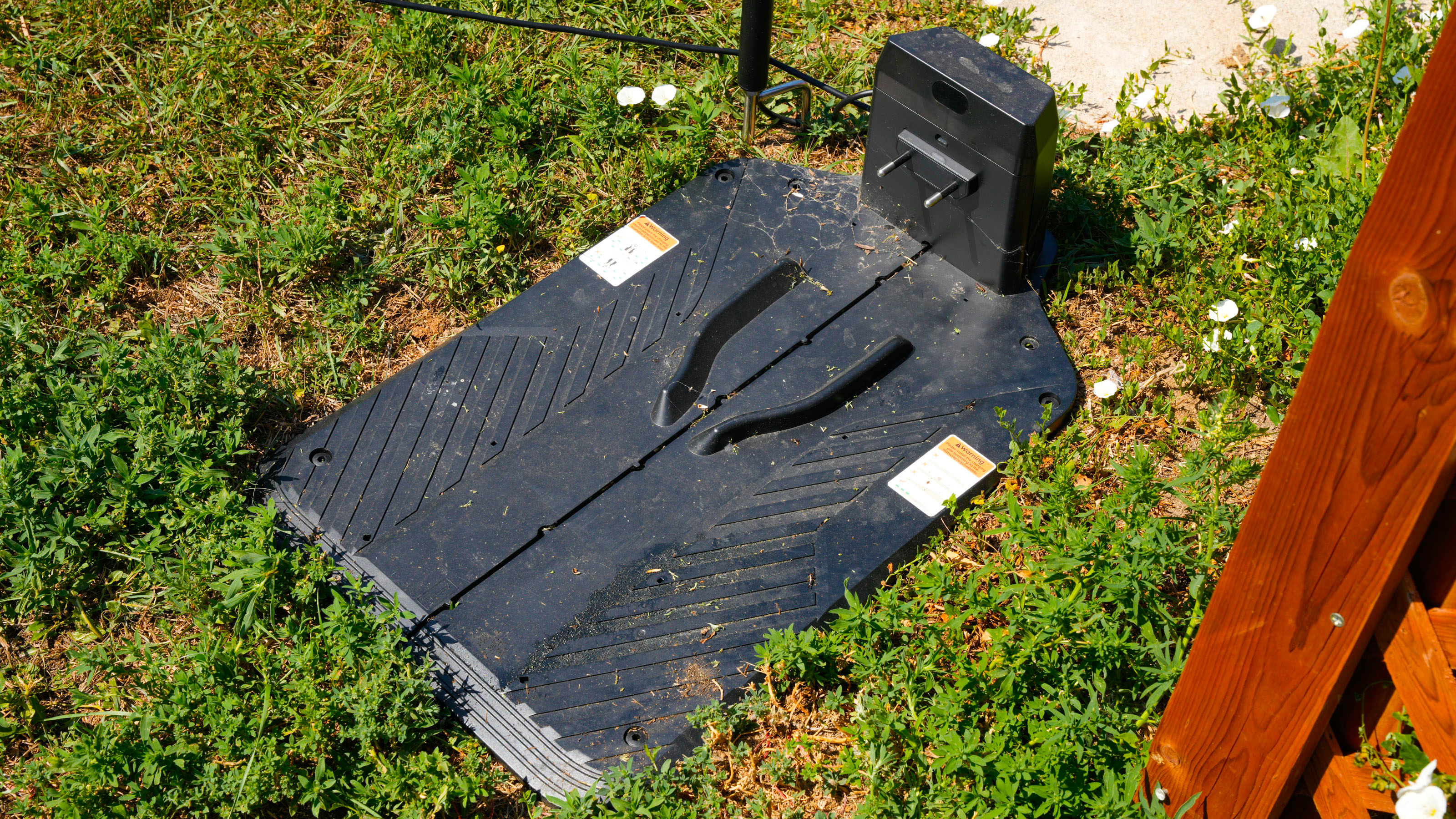
The best way to get the Anthbot Genie 3000 up and running quickly is to download the app and connect to the Genie via Bluetooth. From there, you can set up Wi-Fi, which will allow auto firmware and map updates.
Once the docking station and RTK are both in place and powered up, and the unit is paired to the app, the Genie can begin the yard mapping process — assuming the battery is charged. If it’s below 50%, you may need to wait for it to charge so you can update to the most recent firmware and have enough battery power to complete the mapping process.
The problem is, there’s no way to opt out of the firmware update. I tried ten times to do the update and it failed nine times. That led to a pretty protracted delay in getting my Genie set up.
Once it finally updated, it was time to map the yard. I started with the auto mapping mode, but I could see the Genie getting hung up on a lot of objects around the fringe of my yard, so I opted to switch to manual mode. It went a lot quicker this way. You’ll use the app to do this; there will be two joystick controls displayed, one for forward/back control, and one for left/right control. It’s actually pretty fun to control the unit in this manner.
It’s important to get a good map going before mowing. Otherwise, the Genie will sort of wander. So I actually ended up re-mapping after my first try to ensure I got a good border. It took about twenty minutes to get my back yard mapped manually.
Performance
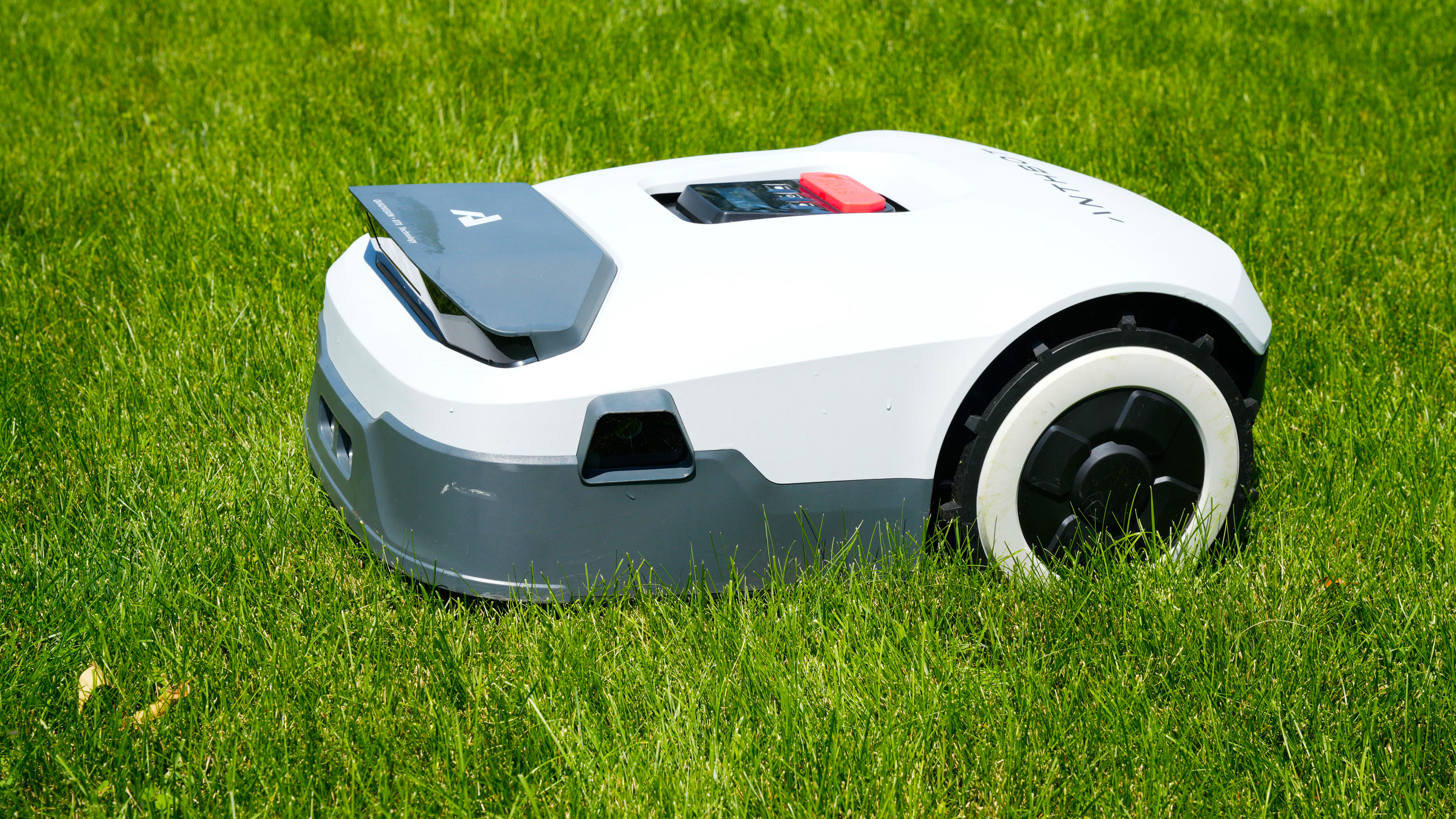
If you have a lot of weeds in your yard, the Genie 3000 will struggle a bit. Same if you have sandy or muddy spots. You’ll want to map areas like this out so the Genie can avoid them. The Genie is best suited to manicured or at least well maintained lawns with mostly grass and few, if any, weeds.
Once it gets going, the Genie plugs away at a moderate pace. Expect it to run for quite a while if you have a large yard. For example, it took 23 minutes to mow one small section of my yard, which measures 388 square feet. My entire backyard takes over an hour and a half. But you don’t need to babysit it; feel free to walk away and let it do its thing.
You can also speed it up in the app. This is best only if your grass is already fairly short and you just want to trim it. If your grass is fairly long and needs a solid cutting, stick with the slower speed.
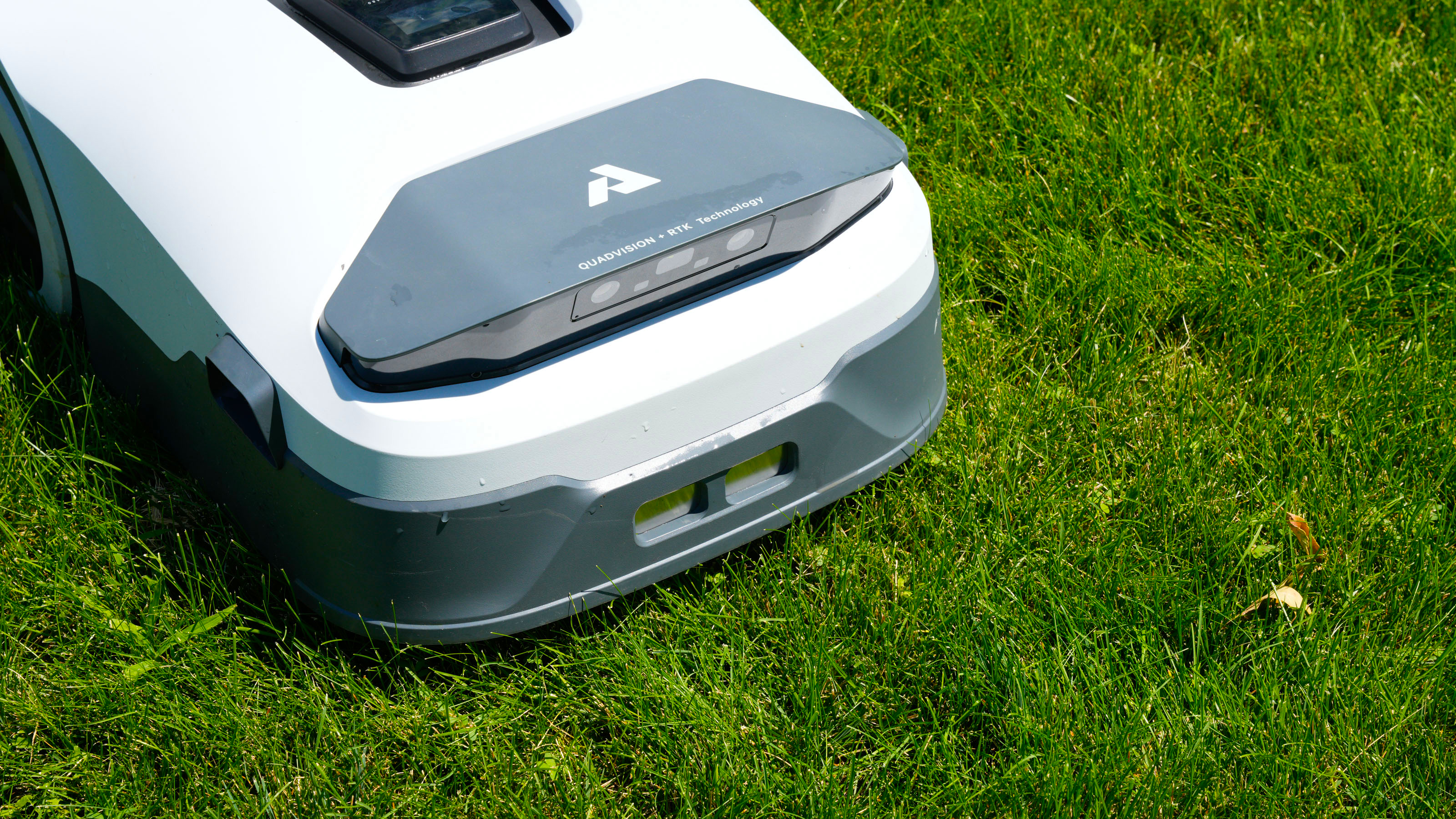
With super-thick grass, the Genie does an okay job. I did find it necessary to go over the same areas more than once to get a truly clean cut. When the grass is already fairly low, the Genie does a much better job. In fact, before your first use, Anthbot does recommend manually mowing your lawn to a reasonable height so the Genie is more efficient. It’s best to program your Genie to mow frequently to get the best results.
On its initial mowing setting, the Genie will ignore most of the edge of your boundary. If you want the mower to touch up the edges, you can simply use the Edge setting in the app and the mower will get those fringes. It also has a spot setting, as well as the ability to program ‘no-go’ zones to avoid fixed obstacles or yard features.
Under normal mowing parameters, the battery life is pretty good. I have it running as I write this article, and the grass is on the long side. According to the app, the mower has been running for the last 25 minutes, and has used about 10% of its battery. That’s not much, considering the use case, external temperature (already over 90 degrees outside), and square footage already covered (just over 500).
The Genie does spend a bit too much time spinning in circles when it gets disoriented, or after it bumps into an obstacle. It usually takes several seconds for the unit to re-orient itself and get going again. And I’ve noticed that it does tend to go back to those spots later to ensure it hasn’t missed anything, but the results are hit or miss.
App
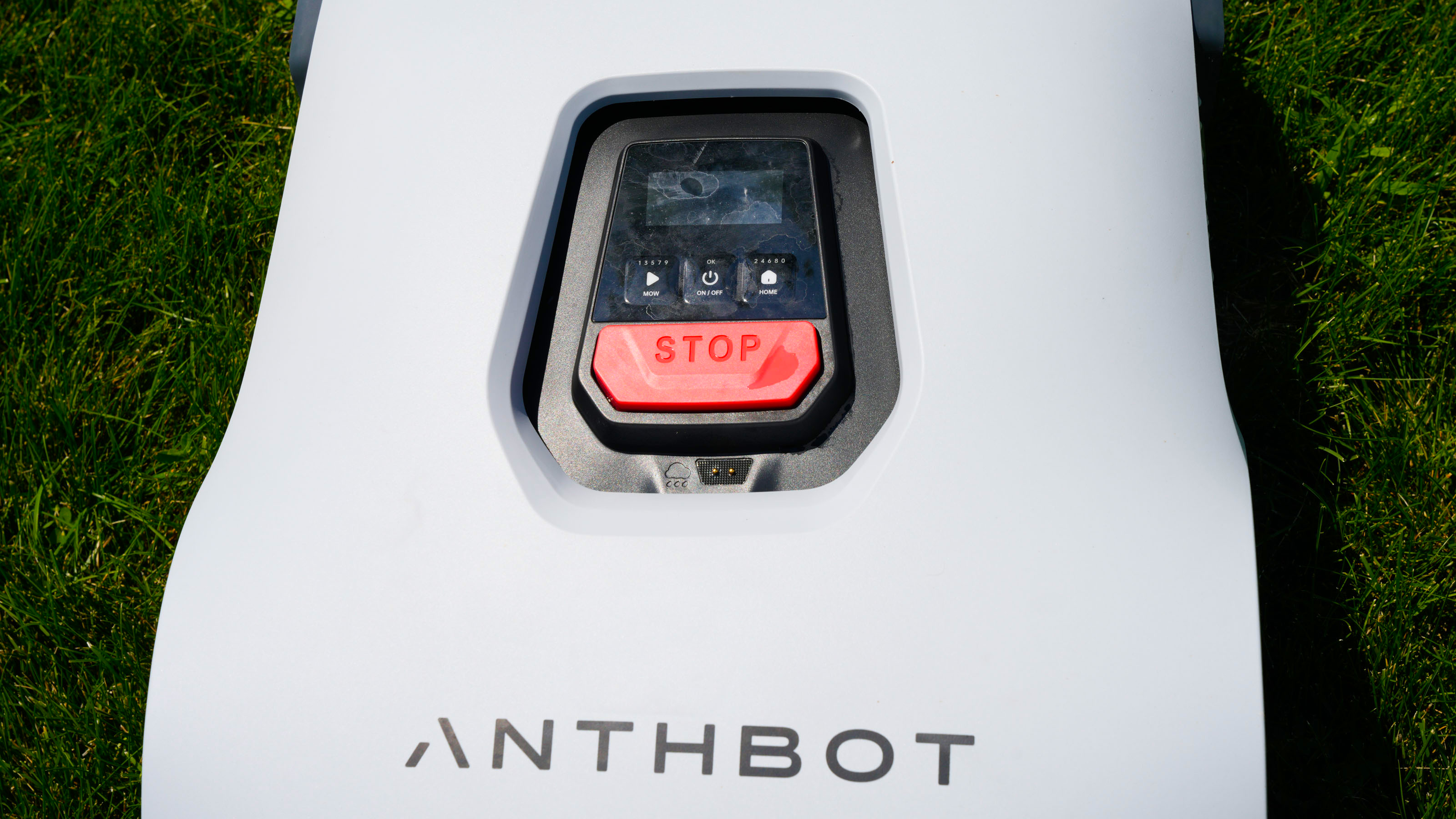
The app is easy to use for the most part, though I do wish there were more in-app explanations about the various features. For example, while it’s easy to go into the individual zones you've set for your yard, there’s no in-app explanation about what this feature is, or what it does. There are some tutorials that pop up upon first set-up of your lawn boundaries, though, and these are quite thorough.
You can do quite a lot within the app: raise or lower the mower’s voice volume, change the mowing direction, change your cutting height and mower speed, and even enable the Smart Lawn Care feature that adjusts mowing settings automatically based on what the mower has learned from your grass growth.
But it’s not without its quirks. As I mentioned earlier, there’s no way to opt out of over-the-air firmware updates if you want to put them off to a later time, which can delay activation of the mowing features. I also didn’t find any way to change from metric to imperial measuring units.
Ultimately, the app is very usable, though it could use some streamlining. Like most appliance apps, there’s always some fiddling around to figure out the features and the ins and outs of the user interface. I’d give the Anthbot app a solid B rating here.
Accessories
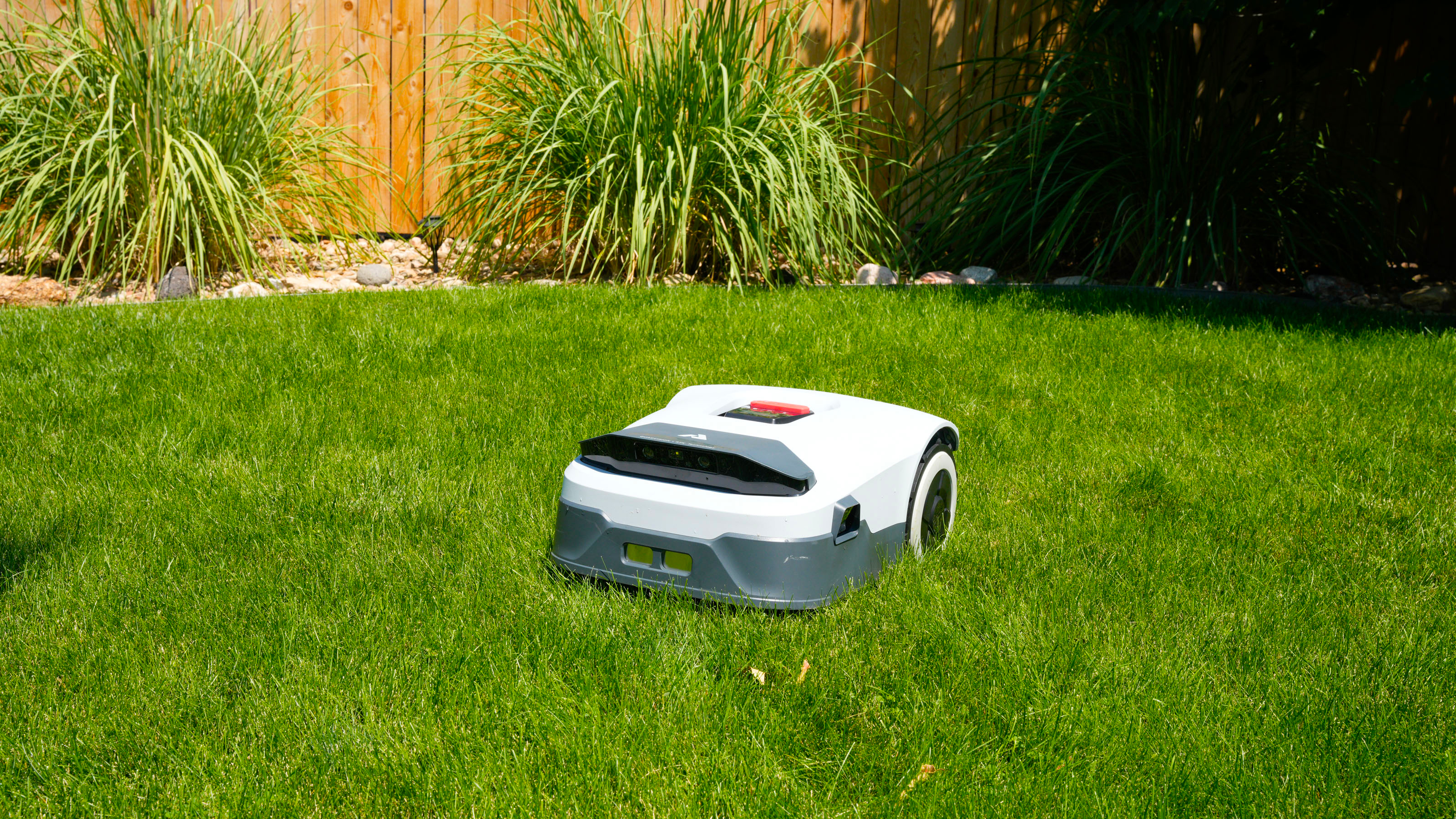
Anthbot offers a few key accessories that you can purchase right on its website. For my purposes, the most important is the RTK Wall Mount Kit ($79), which allows you to place your RTK antenna on or near buildings should you have a complicated yard layout, like me.
The Rain Cover ($200) seems like a solid investment if you live in rainy environments. While the Genie is IXP6 rated, the rain cover is sure to prolong the overall life of your investment.
The rest of the accessories are replacement parts, like batteries ($80) and replacement blades ($19).
Competition
The robot lawnmower category is ever-growing. Many of the offerings that compete with the Genie 3000 use buried wires to contain the mower within its boundaries. Though more and more, such setups are becoming antiquated.
A direct competitor is Sunseeker’s X7 Wireless Robot Lawn Mower ($2,699), which covers 0.75 acres to the Genie’s 0.89 acres. The Genie is less expensive, but it also has a smaller cutting radius. The Sunseeker also features a floating blade system that allows a wider range of cutting heights.
Verdict
The Genie 3000 excels in yards with fairly manicured lawns. Weedy lawns may not be ideal for this particular unit. The battery life is very good, the app is decent, and the set-up is quick and easy once you get the hang of it.
The Genie does get hung up on obstacles, however, and ends up spinning in place to find an alternate route. And the OTA firmware updates can be disruptive if you’re just trying to get mowing right now.
But overall, the Genie 3000 has saved me a lot of work and time sweating in the sun. Its cutting radius is small but clean on manicured lawns, and setting up boundaries for your lawn and various zones within your yard is pretty simple. This unit is best for users who want minimal setup and lots of battery life.

Dan Cavallari is the former technical editor for VeloNews Magazine, who currently reviews electric bikes, bike lights, and other bike accessories for Tom's Guide. In addition to VeloNews, his work has appeared in Triathlete Magazine, Rouleur Magazine, CyclingTips.com, Road Bike Action, Mountain Bike Action, CycleVolta.com, Tomsguide.com, and much more. Dan also hosts two podcasts on his site, Slow Guy on the Fast Ride: One is about cycling and other outdoor activities, while the other looks at mental health issues. Most recently, Dan also covered the 2022 Tour de France. Dan lives outside of Denver, Colorado with his family.
You must confirm your public display name before commenting
Please logout and then login again, you will then be prompted to enter your display name.
